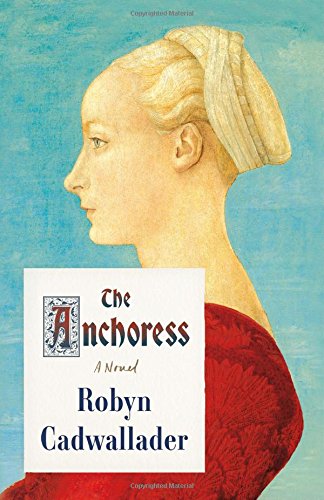The Anchoress
The medieval anchoress chose to be enclosed within a cell attached to the outer wall of a church. She willingly participated in the enclosure ceremony, which included a ritual burial, often with the anchoress laid on a funeral bier and receiving last rites. The anchoress was now essentially dead to the world. Finally enclosed within her cell, the entryway is either nailed shut or bricked over, and the anchoress remains there for the rest of her life.
Robin Cadwallader is faithful to the many details of life prescribed for an anchoress, religious minutiae which are fascinating in themselves. What Calwallader brings to this novel is the character of Sarah, the anchoress. Sarah is seventeen when she seeks permission to become the anchoress in the village church of Hartham, although she is in deep mourning for her sister, who died in childbirth, and is running from a possible marriage to the son of Sir Geoffrey Maunsell, a local lord with a questionable character.
In addition to the dynamic Sarah, Cadwallader crafts a community full of unique secondary characters with whom Sarah interacts and in turn learns much about the life of the community around her, making the novel much more the story of a community than that of one isolated woman. Into this are moderately injected the historical themes of church corruption as well as the misogynistic medieval attitudes about sexuality and gender, power and privilege, and learning.
This debut novel is beautifully written with flawless historical accuracy, filled with intensely descriptive imagery of the world that is Sarah’s – both within her cell and inside her head. That cell, however, does not protect Sarah from the church hierarchy or the laws of the land. Highly recommended.










